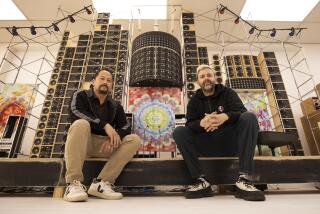Historical Rubbings a Worldwide Hobby
- Share via
Question: I recently saw a beautiful, framed gravestone rubbing that dates back about 200 years. I believe it was taken from a British cemetery. It occurred to me that this might be an interesting area for collectors.--N.W.
Answer: Rubbings are very popular among collectors worldwide. Recording historical images on specially treated paper has become so widespread that, particularly in Europe, many institutions--such as churches, schools and cemeteries--require that the individual book time to do a rubbing that could take an hour or more to execute.
Tombstone epitaphs make interesting subjects and can be quite striking when properly framed. Collectors have shown interest in gravestone rubbings from 18th- and 17th-Century American tombstones. Some of the collectors have put together collections based, for example, on a particular era, such as the development of the American Colonial period or the opening of the American West.
In terms of value, epitaphs by themselves are interesting, but any artwork that accompanies the written work serves to enhance the rubbing’s value, collectors say.
In doing the rubbing, the would-be collector should take great care not to damage the object from which the rubbing is made, lest it be placed off-limits for other collectors.
Q: What sort of value would whale-oil lamps produced in the middle 18th Century have?--G.S.
A: Such lamps, in good condition, have sold for several hundred dollars. Their value is enhanced if the name of the firm that manufactured the lamp, along with its production date, is stamped somewhere on the base.
Usually, these lamps stand no more than 1 1/2 feet high and may have either colorless or multicolored glass. Since kerosene lanterns became popular following the Civil War, you should be suspicious of any “authentic” whale-oil lamps purported to be made in the late 18th Century.
As for the kerosene variety, they may be very difficult to evaluate in terms of antiquity because they were so widely produced by so many companies. Therefore, prices should take a sharp jump if there is some hint as to a particular kerosene lamp’s history, such as a stamping that tells you where and when it was made.
Kerosene lamps have changed hands for more than $100, but generally they do not command as high a value as the rarer whale-oil variety. Also, unlike many whale-oil lamps that were manufactured along the Eastern Seaboard, several major kerosene manufacturers were located in the Midwest.
UC Santa Barbara’s University Art Museum is interested in contacting readers who collect neon art for an exhibition it is planning for February and March.
“The University Art Museum is interested in organizing an exhibition of what I call classic neon signs,” J. David Farmer, the museum director, says. “By that, I mean examples of good commercial neon design from the postwar years.”
For further information, call the museum at (805) 961-2951.
What’s being billed as an affordable antiques display will be found on “antique row” at the 31st annual Southern California Home & Garden Show at the Anaheim Convention Center, Aug. 17-25. Chuck and Audrey Zeder of Long Beach, who specialize in British royal commemorative souvenirs, are sponsoring the display.
For sewing machine buffs, collector Walter Hunt will display more than 50 rare machines from several countries that date back to the mid-1800s.
Ronald L. Soble cannot answer mail personally but will respond in this column to questions of general interest about collectibles. Do not telephone. Write to Your Collectibles, You section, The Times, Times Mirror Square, Los Angeles 90053.


